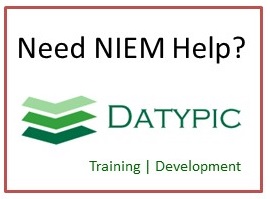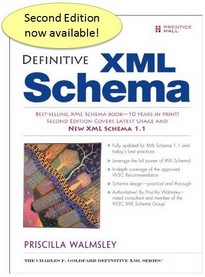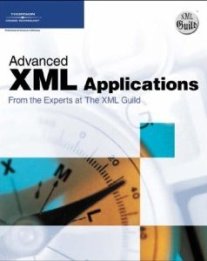biom:DentalVisualImageCodeType
A data type for a visual image view code
Complex type information
Namespace: http://release.niem.gov/niem/domains/biometrics/4.0/
Schema document: domains/biometrics/4.0/biom.xsd
Content
from type biom:DentalVisualImageCodeSimpleType
Valid value Description EFLR Image with device present that retracts the lips EFNS The subject's face without any incisions performed by the medical examiner or coroner. EFOL Left - Image should fill at least 90% of the image and extend from above the top of the head to the inferior border of the hyoid bone. The subject's head is rotated 45_. This position is independent of the size of the nose in contrast to the alignment of the nose with the cheek. Focus point and center of the picture is on the Frankfort horizontal line at the junction with the lateral acanthus. The lower margin is the steno-clavicular joint. EFOR Right - Image should fill at least 90% of the image and extend from above the top of the head to the inferior border of the hyoid bone. The subject's head is rotated 45_. This position is independent of the size of the nose in contrast to the alignment of the nose with the cheek. Focus point and center of the picture is on the Frankfort horizontal line at the junction with the lateral acanthus. The lower margin is the steno-clavicular joint. EFPL Left - Image should fill at least 90% of the image and extend from above the top of the head to the inferior border of the hyoid bone. The head should be positioned so that the ala-tragus line is parallel to the floor of the jaw in the rest position. The head should be turned so that the contralateral eyebrow is barely visible. The image should be centered midline of the face both horizontally and vertically. EFPR Right - Image should fill at least 90% of the image and extend from above the top of the head to the inferior border of the hyoid bone. The head should be positioned so that the ala-tragus line is parallel to the floor of the jaw in the rest position. The head should be turned so that the contralateral eyebrow is barely visible. The image should be centered midline of the face both horizontally and vertically. EFWI Image taken after incisions made that were part of the examination of the subject IBLB The image should extend from the left canines to as far distally as possible. Ideally the left second molars should be included. IBLL The image should extend from the left mandibular canine to as far distally as possible. Ideally the left mandibular second molar should be included. IBLR The image should extend from the right mandibular canine to as far distally as possible. Ideally the right mandibular second molar should be included. IBRB The image should extend from the right canines to as far distally as possible. Ideally the right second molars should be included. IBUL The image should extend from the left maxillary canine to as far distally as possible. Ideally the left maxillary second molar should be included. IBUR The image should extend from the right maxillary canine to as far distally as possible. Ideally the right maxillary second molar should be included. ICL This view should be centered on the left oral linea alba and should include the left parotid papilla. ICR This view should be centered on the right oral linea alba and should include the right parotid papilla. IFJB The image shows the full set of teeth, including anterior teeth as well as a partial view of the premolar and possibly the first molar region. This is the most common code associated with an intraoral frontal view. IFJL The image is taken from the front of the mouth and shows a view of the upper (maxillary) teeth. This code should be selected when there are no lower teeth present on the subject. IFJU The image is taken from the front of the mouth and shows a view of the upper (maxillary) teeth. This code should be selected when the lower jaw is not present on the subject or there are no upper teeth present on the subject. ILL This image should be captured of the mandibular vestibule if there is a significant finding (i.e., tattoo or oral lesion) or an abnormailty of the inferior labial frenulum such as connecting to the palate between the front teeth. ILLB The image should extend from the left canines to as far distally as possible. Ideally the left second molars should be included. ILLF The image should include left mandibular canine to right mandibular canine. ILLL The image should extend from the left mandibular canine to as far distally as possible. Ideally the left mandibular second molar should be included. ILLR The image should extend from the right mandibular canine to as far distally as possible. Ideally the right mandibular second molar should be included. ILRB The image should extend from the right canines to as far distally as possible. Ideally the right second molars should be included. ILU This image should be captured of the maxillary vestibule if there is a significant finding (i.e., tattoo or oral lesion) or an abnormailty of the superior labial frenulum such as connecting to the palate between the front teeth. ILUF The image should include left maxillary canine to right maxillary canine. ILUL The image should extend from the left maxillary canine to as far distally as possible. Ideally the left maxillary second molar should be included. ILUR The image should extend from the right maxillary canine to as far distally as possible. Ideally the right maxillary second molar should be included. IOLA This view should include all anterior teeth, all premolars and at least the mandibular first molar. IOLF This image should contain the occlusal surface of the teeth from left mandibular canine to right mandibular canine. IOLL This view should include all anterior teeth, all premolars and at least the mandibular first molar. IOLR This view should include all anterior teeth, all premolars and at least the mandibular first molar. IOUA This view should include all anterior teeth, all premolars and at least the maxillary first molar. IOUF This image should contain the occlusal surface of the teeth from left maxillary canine to right maxillary canine. IOUL This view should include all anterior teeth, all premolars and at least the maxillary first molar. IOUR This view should include all anterior teeth, all premolars and at least the maxillary first molar. IPB This view is focused upon the soft tissue at the back of the mouth. It should include the uvula and oropharynx regions. IPC This should be a centered view of the palate. ITL This view should be taken with the tongue raised or in retroflex position, centered on the frenulum. ITU This view should be taken with the tongue as flat as possible.
Attributes
| Name | Occ | Type | Description | Notes |
|---|---|---|---|---|
| structures:id | [0..1] | xsd:ID | from group structures:SimpleObjectAttributeGroup | |
| structures:ref | [0..1] | xsd:IDREF | from group structures:SimpleObjectAttributeGroup | |
| structures:uri | [0..1] | xsd:anyURI | from group structures:SimpleObjectAttributeGroup | |
| structures:metadata | [0..1] | xsd:IDREFS | from group structures:SimpleObjectAttributeGroup | |
| structures:relationshipMetadata | [0..1] | xsd:IDREFS | from group structures:SimpleObjectAttributeGroup | |
| Any attribute | [0..*] | Namespace: urn:us:gov:ic:ism urn:us:gov:ic:ntk, Process Contents: lax | from group structures:SimpleObjectAttributeGroup |
Used by
- Element biom:DentalVisualImageCode
Type inheritance chain
- xsd:token
- biom:DentalVisualImageCodeSimpleType
- biom:DentalVisualImageCodeType
- biom:DentalVisualImageCodeSimpleType



